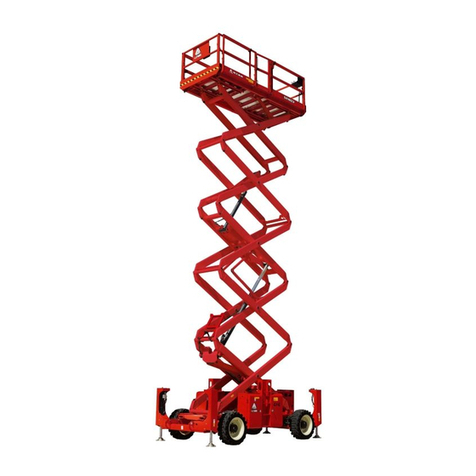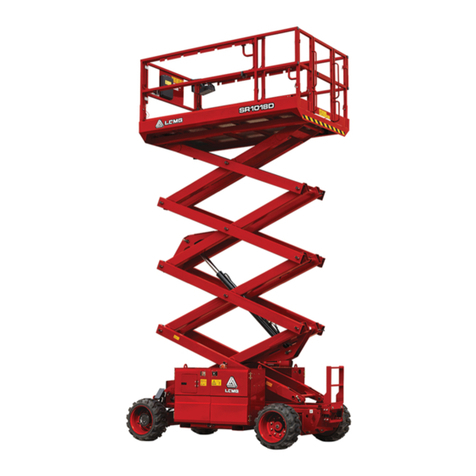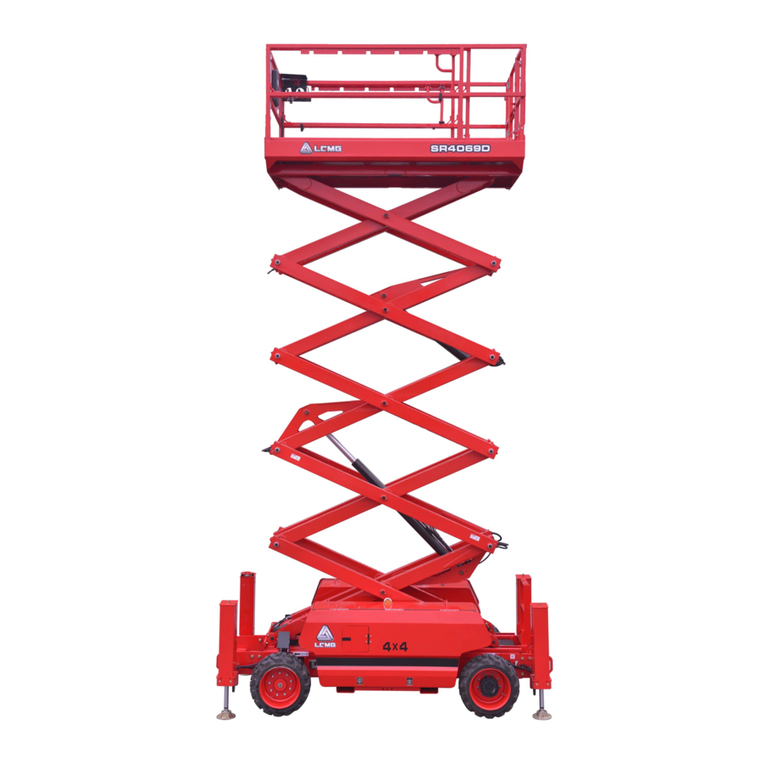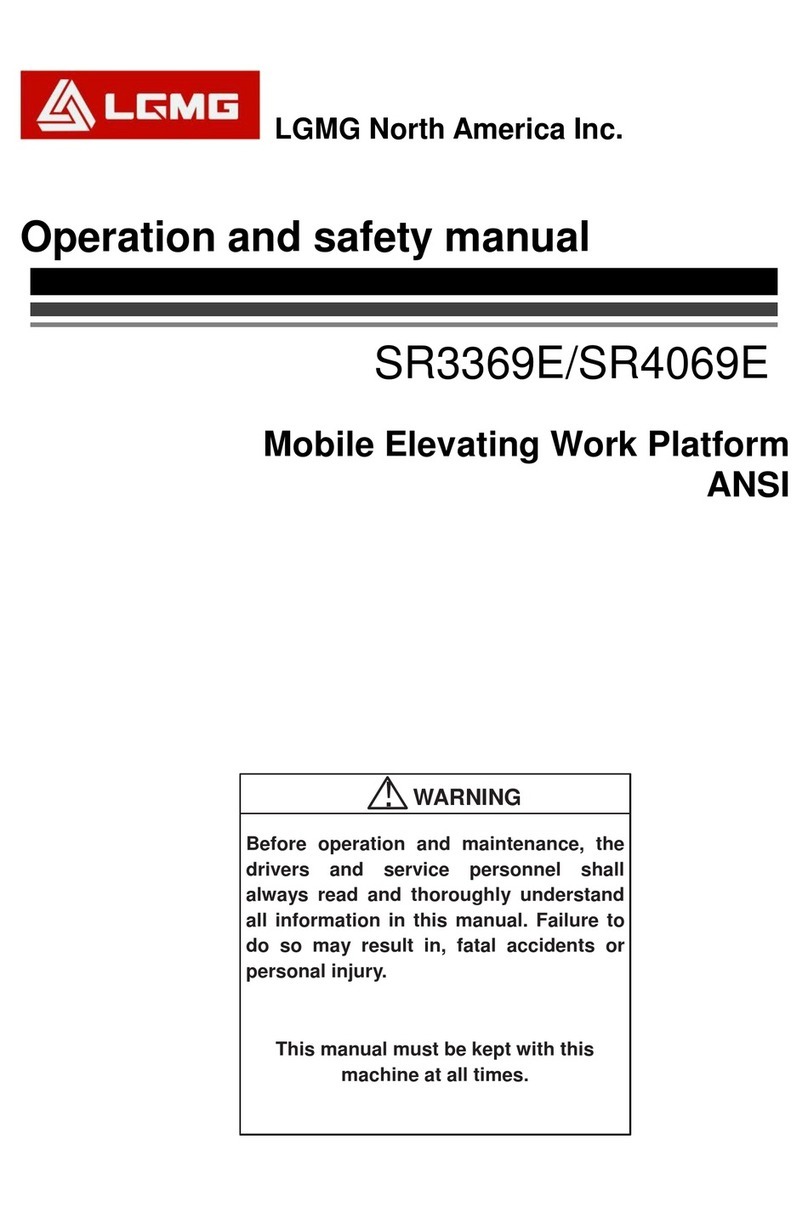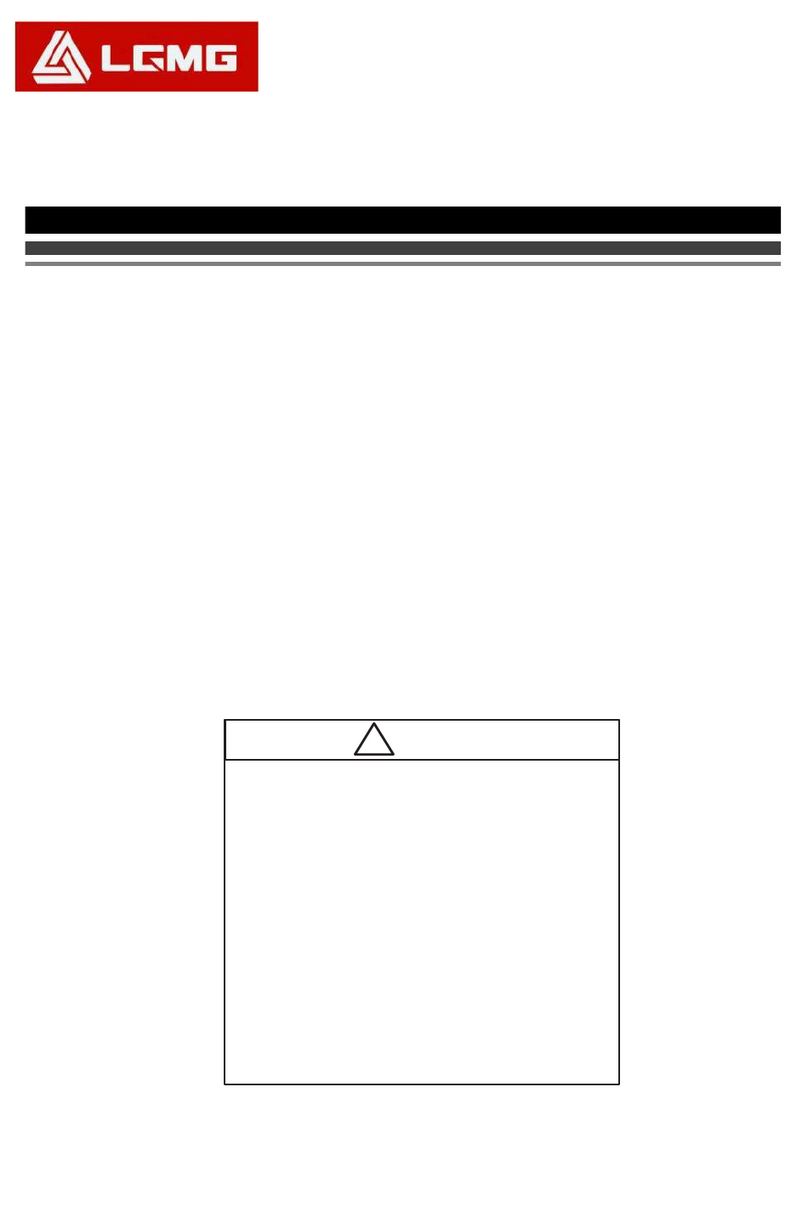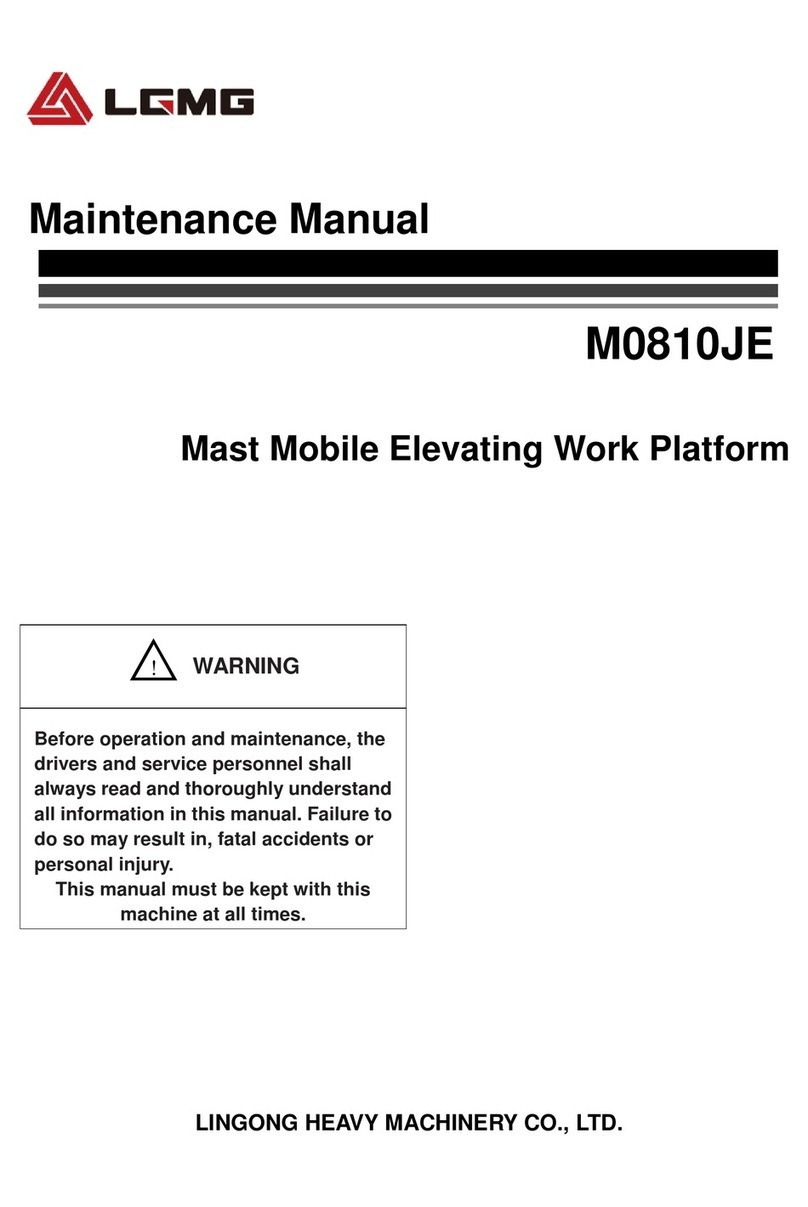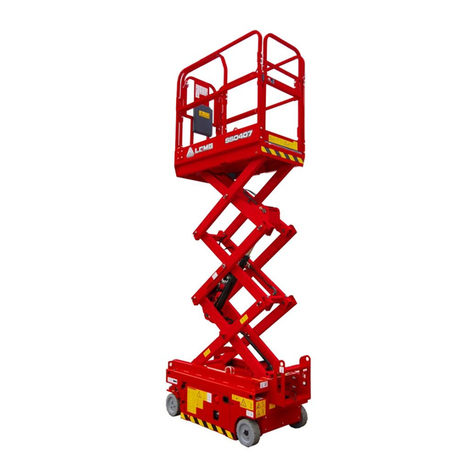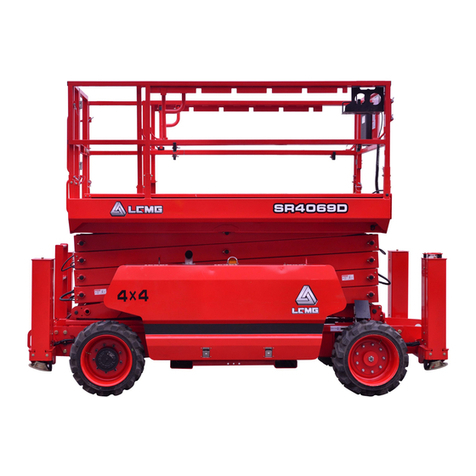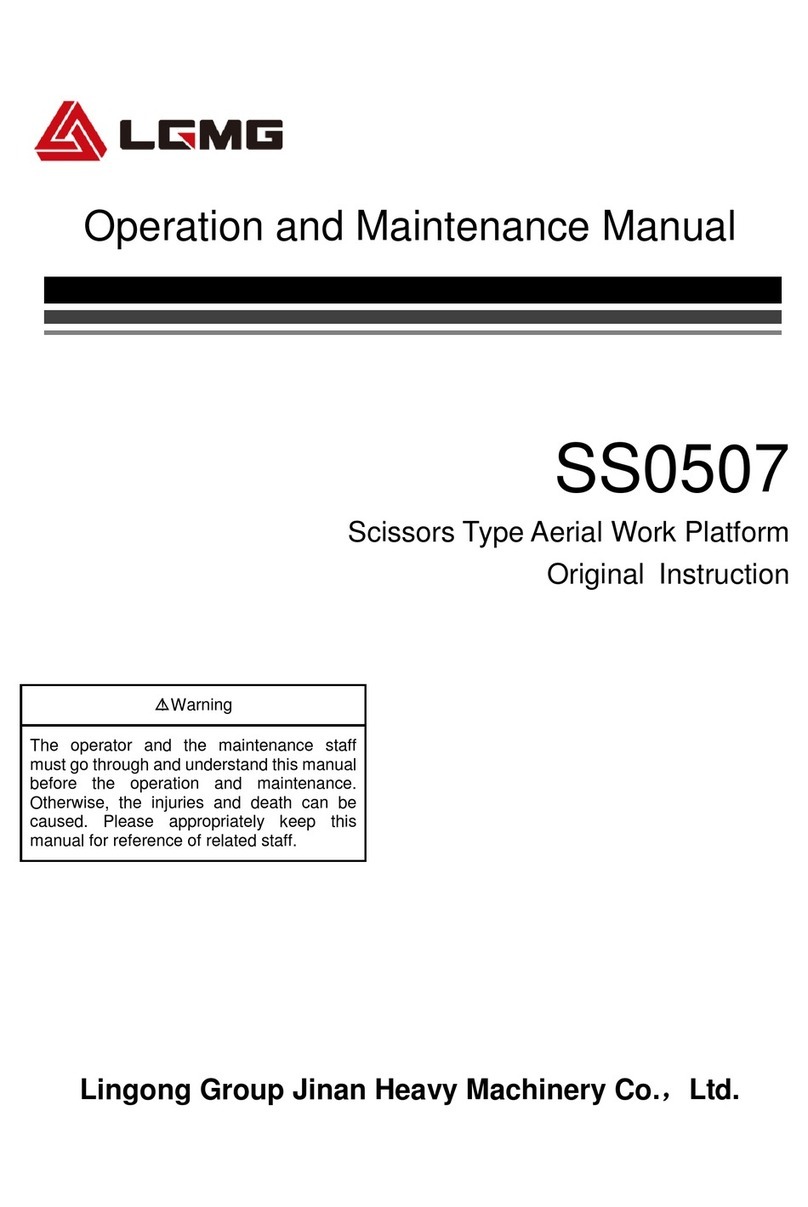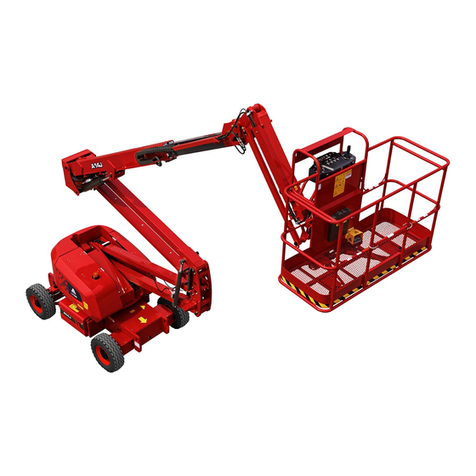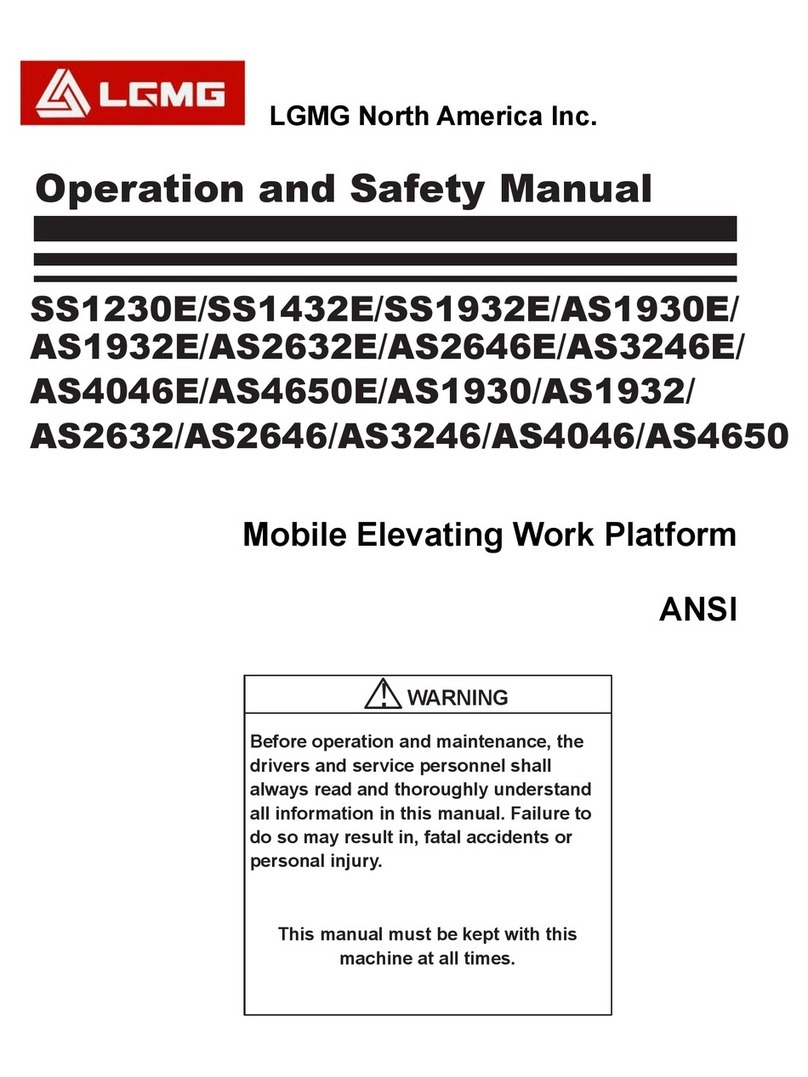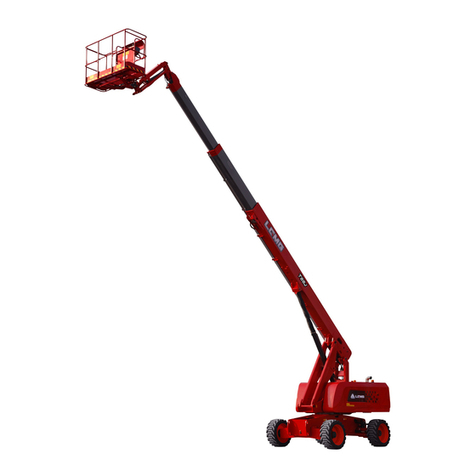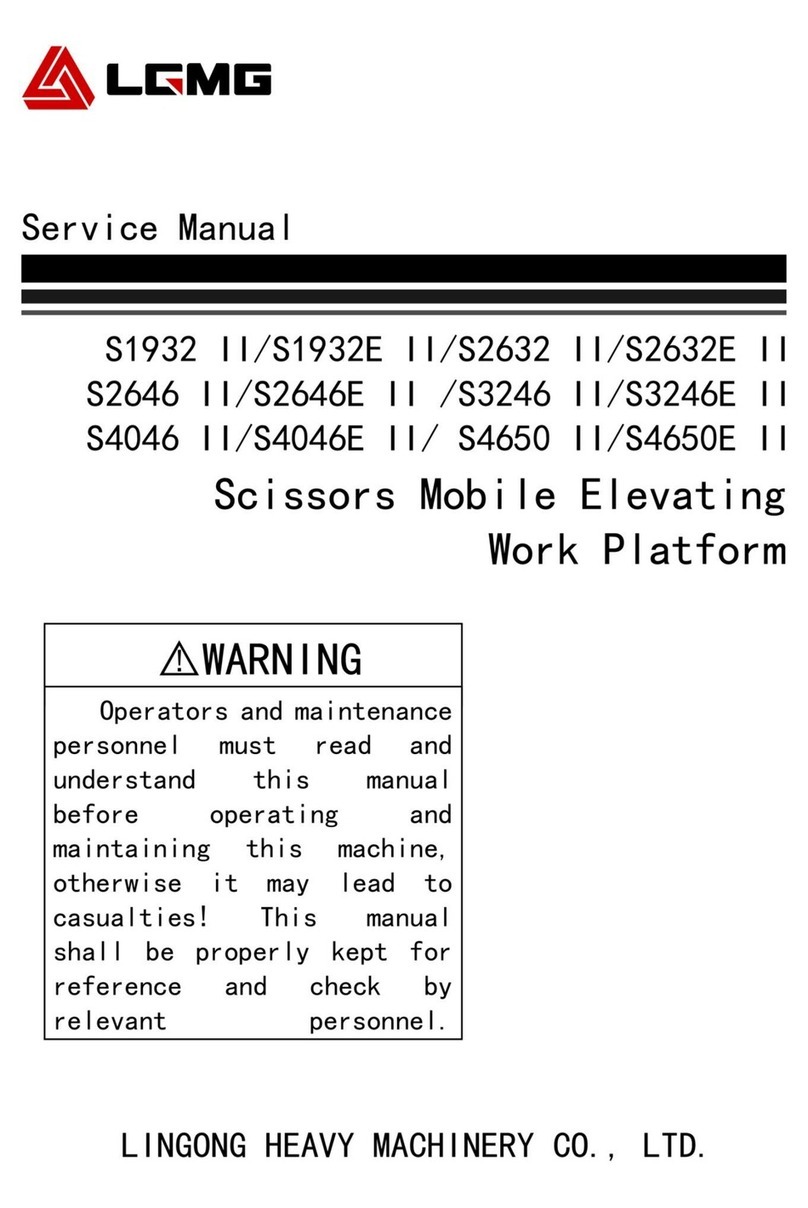
LGMG North America Inc. Maintenance Manual
3
1.1 Compliance
1) The operator can only perform routine
maintenance items as specified in this manual.
2) Regular maintenance inspections should
be performed by trained service technicians as
required by the manufacturer
Maintenance symbol legend
The following symbols appear in this manual to
indicate the relevant meaning in the operation
instructions. When one or more symbols appear
in front of the maintenance procedure, the
meanings expressed are as follows.
It indicates that a tool is required to
perform this procedure.
It indicates that a new part is
required to perform this procedure.
It indicates that the engine must be
cooled before performing this
procedure
1.2 Checking the Safety
Manual
It is necessary for safe equipment operation to
keep the Operator and Safety Manual in good
condition. The manual and each equipment
should be stored in a container provided on the
work platform. An illegible or missing manual
will not provide the necessary safety and
operation information for safe operation.
1) Check that the storage container is on site
and in good condition.
2) Check that the Operator, Responsibility,
and Safety Manual is complete in the
storage container on the work platform.
3) Check that each page of the manual is
identifiable and in good condition.
4) Put the manual in the storage file box after
use.
△
! If you need to replace the manual,
please contact the company’s service
personnel.
1.3 Checking the labels and
signs
It is necessary for safe operating equipment to
keep all safety and instructions labels and signs
in good conditions. Labels are used to remind
operators and staff of the possible hazards
when operating this equipment. User operation
and maintenance information is also provided.
An illegible label does not remind the staff of
steps or hazards, and may also result in unsafe
operating conditions.
Refer to the label section in this manual and use
the label menu and instructions to check
whether all labels are in place.
Check all the labels for clarity and damage and
immediately replace any damaged or illegible
ones.
△
!If you want to replace the label,
please contact the company’s service
personnel.
1.4 Checking for damaged,
loose or missing parts
This check should be performed every 8 h or
every day.
Daily equipment status checks are necessary
for safe equipment operation and good
equipment performance. Incorrect location and
repair damage, and loose or missing parts may
result in unsafe operating conditions.
1) Check the entire equipment for damage
and incorrect installation or loss of parts,
including:
Electrical components, wires and cables












